Suborder Sauria Higher classification House geckos Rank Species | Subphylum Vertebrata Scientific name Hemidactylus frenatus Order Scaled reptiles | |
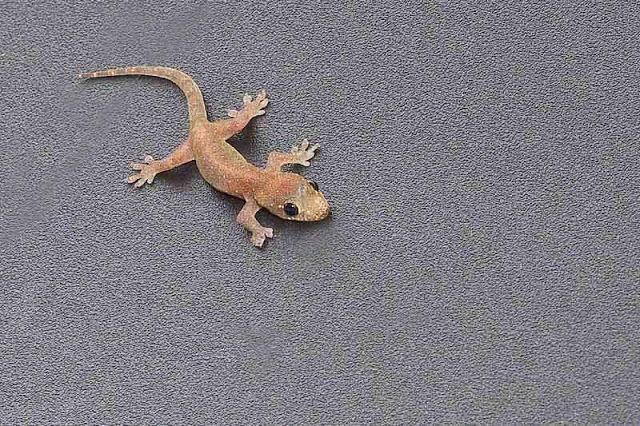 | ||
Similar House geckos, Reptile, Geckos, Tokay gecko, Flat‑tailed house gecko | ||
Baby lizard common house gecko macro camera
The common house gecko (Hemidactylus frenatus) (not to be confused with the Mediterranean species Hemidactylus turcicus known as Mediterranean house gecko), is a native of Southeast Asia. It is also known as the Pacific house gecko, the Asian house gecko, house lizard, or Moon Lizard.
Contents
- Baby lizard common house gecko macro camera
- Habitat
- Etymology
- Distribution
- House geckos in captivity
- Invasive species
- Superstition
- References
Habitat
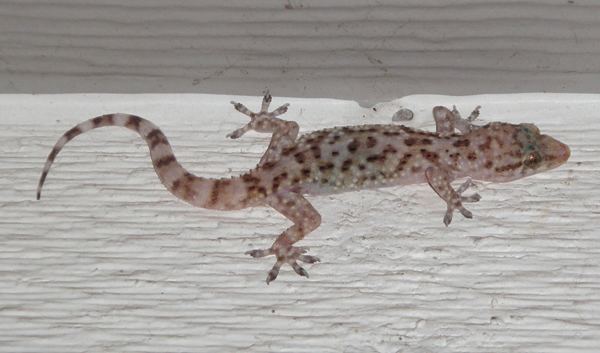
Most geckos are nocturnal, hiding during the day and foraging for insects at night. They can be seen climbing walls of houses and other buildings in search of insects attracted to porch lights, hence their name "house gecko". Spread around the world by ships, these geckos are now common in the Deep South of the United States, large parts of tropical and sub-tropical Australia, and many other countries in South and Central America, Africa, South Asia, and the Middle East. They grow to a length of between 75–150 mm (3–6 in), and live for about 5 years. These small geckos are non-venomous and harmless to humans. Medium to large geckos may bite if distressed, however their bite is gentle and will not pierce skin.
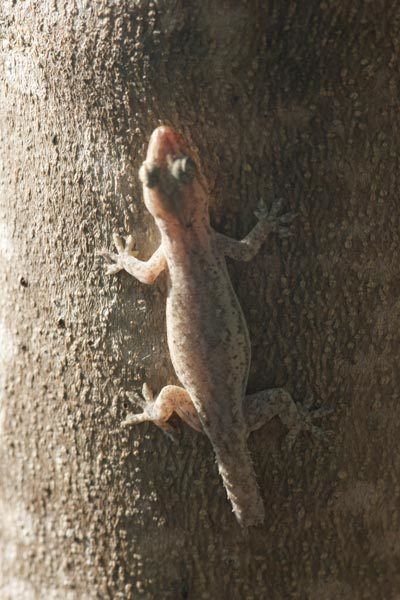
A tropical gecko, Hemidactylus frenatus thrives in warm, humid areas where it can crawl around on rotting wood in search of the insects it eats. The animal is very adaptable and may prey on insects and spiders, displacing other reptiles.
Etymology
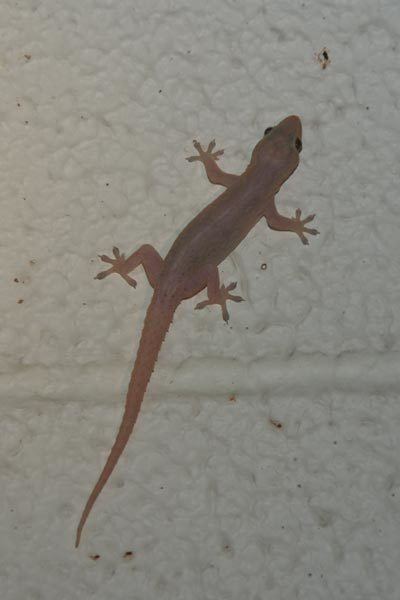
Like many geckos, this species can lose its tail when alarmed. Its call or chirp rather resembles the sound "gecko, gecko". However, this is an interpretation, and the sound may also be described as "tchak tchak tchak" (often sounded three times in sequence). In Asia/Southeast Asia, notably Indonesia, Thailand, Singapore, and Malaysia, geckos have local names onomatopoetically derived from the sounds they make: Hemidactylus frenatus is called "chee chak" or "chi chak" (pr- chee chuck), said quickly. Also commonly spelled as "cicak" in Malay dictionaries. In the Philippines they are called "butiki" in Tagalog, or "tiki" in Visayan, and in Thailand "jing-jok" (Thai: จิ้งจก). In some parts of India and in Pakistan they are called "chhipkali" (Urdu:چہپکلی, Hindi: छिपकली), from chhipkana, to stick. In Nepal they are called "bhitti" (Nepali: भित्ती) or "mausuli" (Nepali: माउसुली). In other parts of India they are called "jhiti piti" (Oriya: ଝିଟିପିଟି), "thikthikiaa" (Maithili: ठिकठिकिया), "paal" (Marathi: पाल), "gawli" or "palli" (Malayalam: ഗവ്ളി (gawli), പല്ലി (palli), Tamil: பல்லி (palli)), Telugu: బల్లి (balli), Kannada: ಹಲ್ಲಿ (halli). In West Bengal and Bangladesh they are called "tiktiki" (Bengali: টিকটিকি) as the sound is perceived as "tik tik tik". In Sri Lanka they are called "huna" in singular form (Sinhalese: හුනා). In Central America they are sometimes called "Limpia Casas" (Spanish: Housecleaners) because they reduce the amount of insects and other arthropods in homes.
Distribution
Worldwide in tropical and subtropical regions:
House geckos in captivity
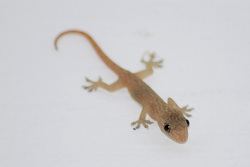
House geckos can be kept as pets in a vivarium with a clean substrate, and typically require a heat source and a place to hide in order to regulate their body temperature, and a system of humidifiers and plants to provide them with moisture.
The species will cling to vertical or even inverted surfaces when at rest. In a terrarium they will mostly be at rest on the sides or on the top cover rather than placing themselves on plants, decorations or on the substrate, thus being rather inconspicuous.
House geckos are also used as a food source for some snakes.
Invasive species
In many countries, Hemidactylus frenatus is an introduced species that is considered a pest and even a "serious threat species" to local wildlife.
While the impact of the Asian house gecko has not yet been closely studied, there is evidence that this "generalist predator" can compete with native gecko species for resources and perhaps replace them, especially in urban areas. Asian house geckos have transferred disease-carrying mites to native species.
Superstition
Geckos are considered poisonous in many parts of the world. In Southeast Asia, geckos are believed to be carriers of good omen.
In Yemen and other Arab countries, it is believed that skin diseases result from geckos running over the face of someone who is asleep.
An elaborate system of predicting good and bad omens based on the sounds made by geckos, their movement and the rare instances when geckos fall from roofs has evolved over centuries in India. In some parts of India, the sound made by geckos is considered a bad omen; while in Bangladesh and Nepal, it is considered to be an endorsement of the truthfulness of a statement made just before, because the sound "tik tik tik" coincides with "thik thik thik" (Bengali:ঠিক ঠিক ঠিক), (Maithili:ठिक ठिक ठिक), (Nepali:ठिक ठिक ठिक), which in Bengali, Maithili and Nepali means "right right right", i.e., a three-fold confirmation. The cry of a gecko from an east wall as one is about to embark on a journey is considered auspicious, but a cry from any other wall is supposed to be inauspicious. A gecko falling on someone's right shoulder is considered good omen, but a bad omen if it drops on the left shoulder. In Punjab, it is believed that contact with the urine of a gecko will cause leprosy. In some places in India, it is believed that watching a lizard on the eve of Dhanteras is a good omen or a sign of prosperity.
